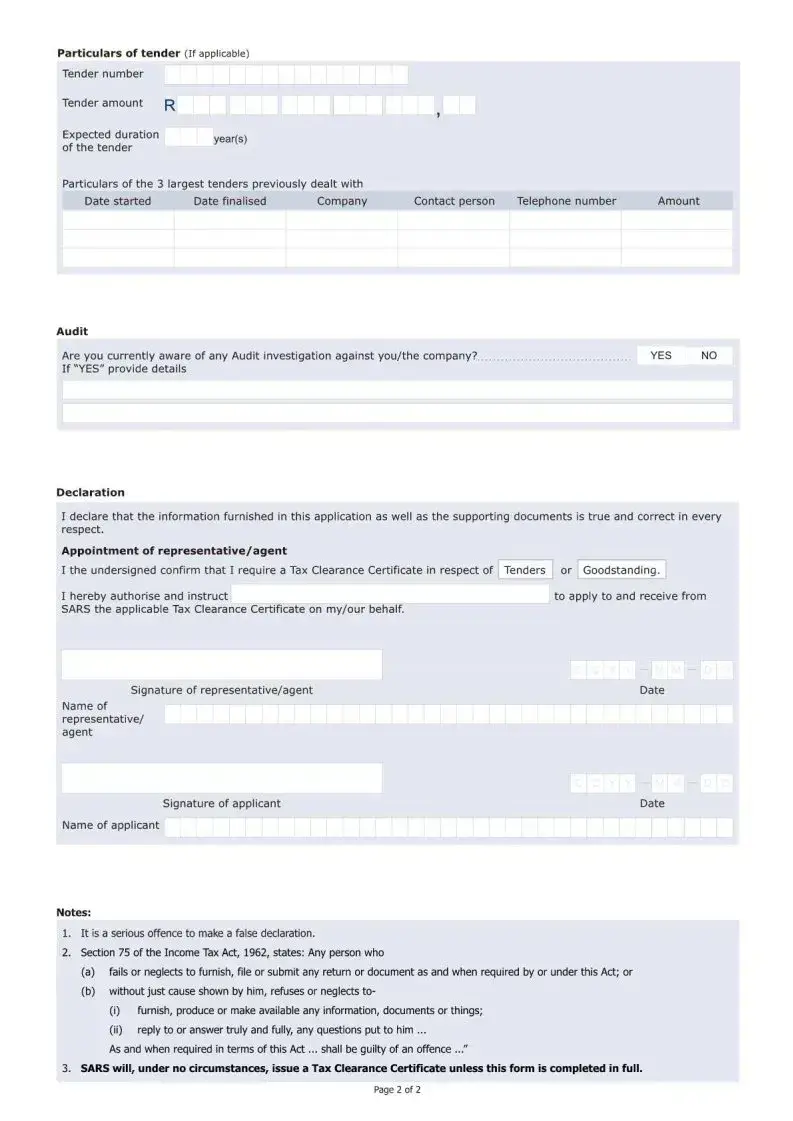An Employment Eligibility Verification Form (I-9) shares similarities with the Application for Tax Clearance form in its need for accurate and truthful personal information. Both documents require the applicant to declare that the information provided is true and correct, and both can lead to legal consequences if false information is submitted. While the Tax Clearance form is specific to tax obligations, the I-9 ensures compliance with employment eligibility laws in the U.S.
The Application for Employer Identification Number (EIN) is another document closely related to the Tax Clearance form, as both are integral to the tax identification processes within businesses. They seek to establish the legitimacy and tax obligations of entities or individuals. Completing either form inaccurately can result in significant penalties or investigations by tax authorities.
The W-9 form, Request for Taxpayer Identification Number and Certification, parallels the Tax Clearance form in its function to collect tax-related identification information. Both forms are crucial for tax reporting and compliance, although the W-9 is often used by contractors and freelancers in the U.S. to provide their tax information to those who will pay them.
A Business License Application also corresponds with aspects of the Tax Clearance form, particularly in terms of compliance and providing accurate business details. While the Tax Clearance form focuses on tax obligations, business licenses pertain to the legal operation within a specific locale. Both are necessary for the lawful operation of a business and require full and truthful disclosure of relevant information.
The Permit to Operate Application is akin to the Tax Clearance form in its regulatory nature, ensuring businesses or individuals meet specific standards before engaging in certain activities. While tax clearance focuses on fiscal responsibilities, permits often address health, safety, or environmental standards, showcasing the broader scope of regulatory compliance.
Disclosure of Ownership and Control Interest Statement forms, commonly used in healthcare and social service industries, share the emphasis on full disclosure of information as seen in the Tax Clearance form. These documents are designed to prevent fraud and ensure accountability, requiring detailed information about entities' or individuals' ownership or control interests.
The Request for Proposal (RFP) submission process, while not a form per se, necessitates a level of detail and truthfulness comparable to the Tax Clearance application, especially when submitting past performance details and financial qualifications, which might include tax clearance certificates as part of the vetting process.
The Tax Return form, for either individuals or businesses, is inherently connected to the Tax Clearance form. Both are critical pieces of the tax compliance puzzle. Filing tax returns accurately is a prerequisite for obtaining tax clearance in many jurisdictions, linking the documents in their purpose to ensure the taxpayer meets all fiscal obligations.
Financial Statement forms, used for a variety of purposes including loan applications and business assessments, require the same level of accuracy and completeness as the Tax Clearance form. Both kinds of documents need truthful representations of financial status and can have serious implications if falsified.
Lastly, the Change of Address form for tax authorities, while simple, shares the requirement for current and accurate information with the Tax Clearance form. Keeping address details up to date is crucial for receiving pertinent tax documents and notifications, including the clearance certificate.


